
Beshbarmak is traditionally eaten with one’s hands, contrary to etiquette.
Legion MediaHospitality is a national trait of the Bashkir people. According to local etiquette, one should welcome and treat any guest, even a stranger, to a sumptuous meal. Often the lady of the house cooks beshbarmak for guests.
Translated from Turkic (formed from "besh" and "barmak"), beshbarmak means "five fingers", and probably has something to do with the fact that nomads didn’t use cutlery when eating beshbarmak. Russian adventurer Ivan Lepekhin wrote in 1770 that Bashkir beshbarmak consists of finely chopped pieces of beef, lamb or horse meat, and salma (noodles), and he concluded that "beshbarmak is the best Bashkir food".
Bashkirs still adhere to certain rules for preparing and serving this festive dish. They take a nice piece of fatty meat – lamb or horse, together with the bones, and then boil it on low heat for 2-2.5 hours. When done, the finished meat is cooled and cut into small pieces.
Noodles for beshbarmak are made from a steep egg dough, which is cut into small rectangles or squares. Then the dough pieces are boiled in meat broth and flavored with butter or broth fat. Beshbarmak is eaten with your hands, drinking from bowls with ‘shurpa’ – rich meat broth. During the meal, it’s customary to give the best pieces of meat to either your neighbors or the most honored guest. The most pleasant aspect about beshbarmak is its homemade taste and nutritional value.
Bashkir beshbarmak is a simple dish to cook at home, but it will take you about 3 hours.
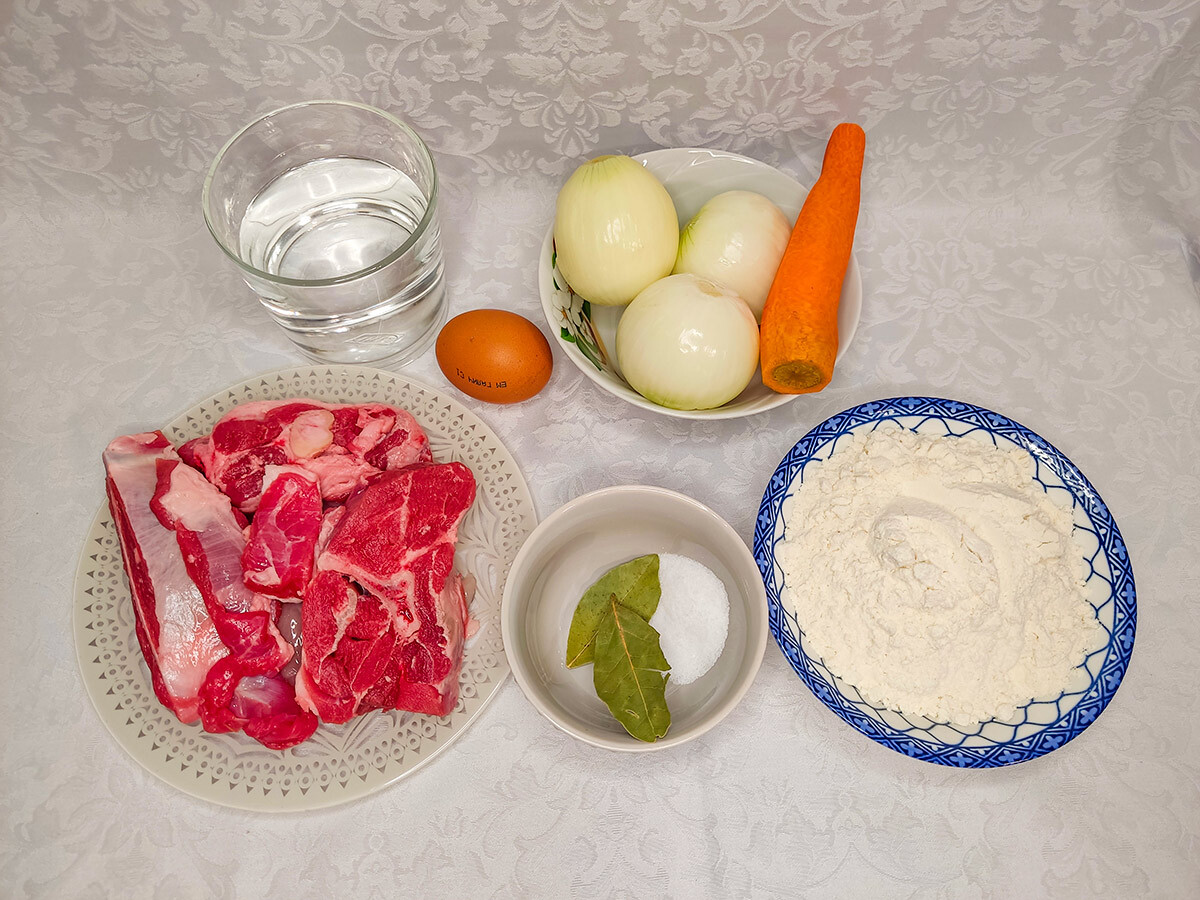
Dough:
1. First, let’s prepare the meat. Cut it into small pieces, leaving the bones with a small amount of meat so that the broth will be rich.
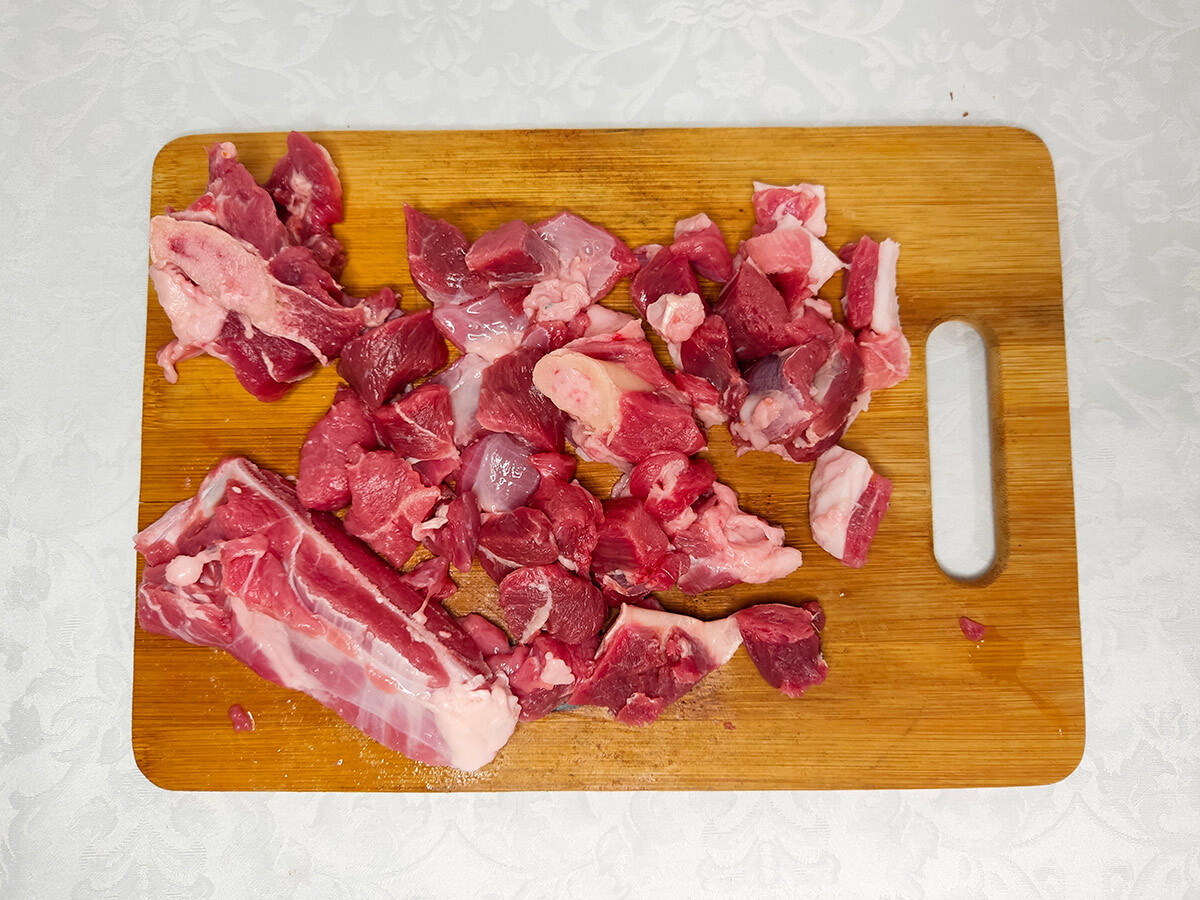
2. Put the meat, 1 onion, and carrot in a saucepan. Pour 2 liters of water, add salt, bay leaf and pepper to taste and bring to a boil. Skim off the foam, and cook the broth for 2-3 hours on low heat until done.
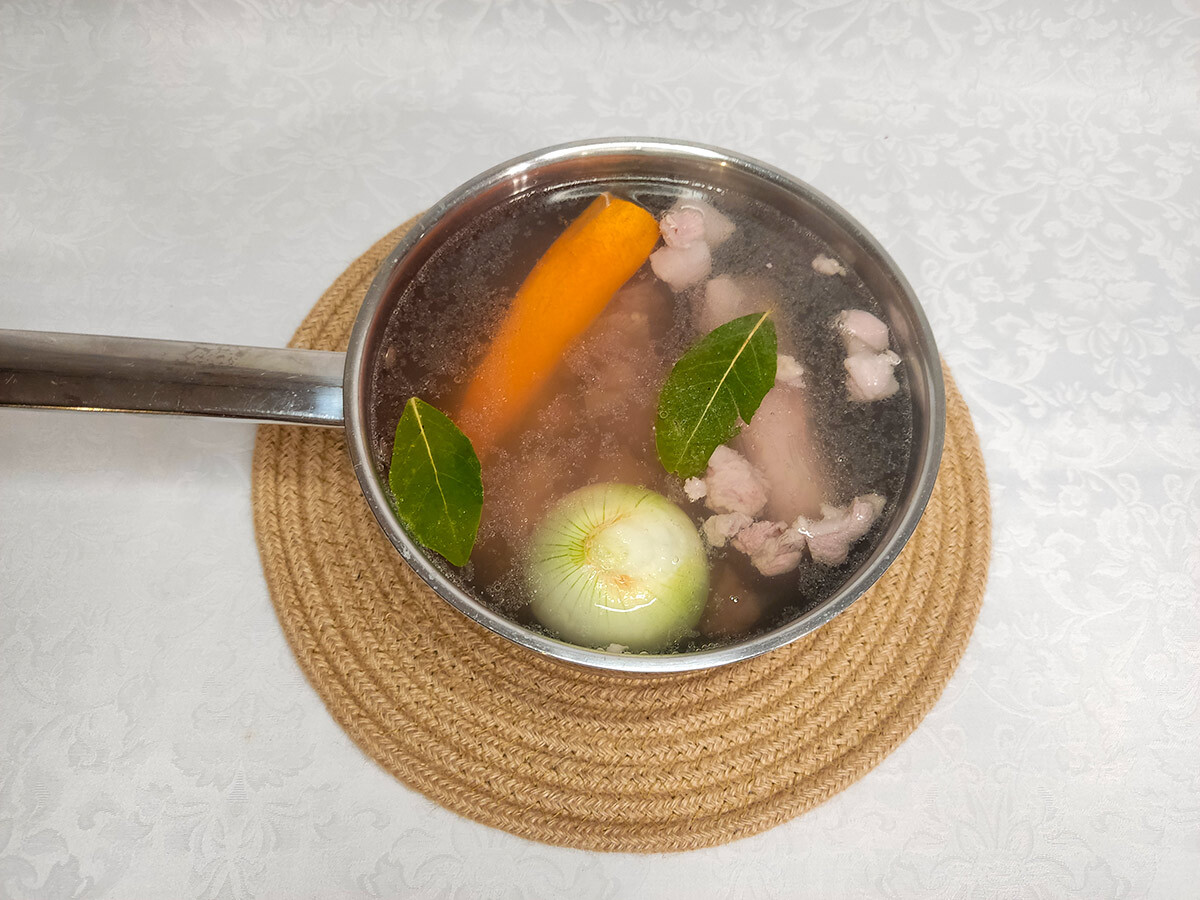
3. Now, let’s make the dough. Add egg, salt and water to the sifted flour, and mix thoroughly.
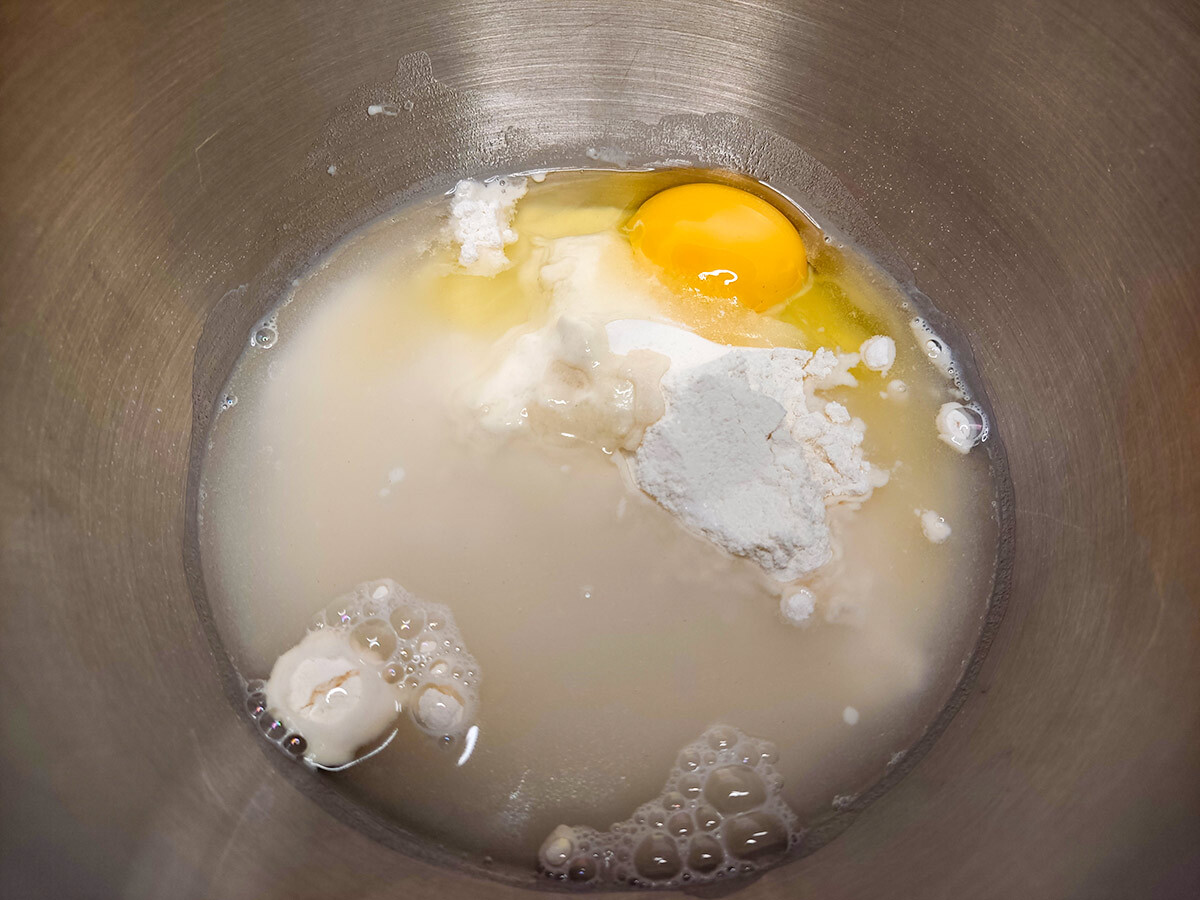
4. Knead the thick dough for at least 10 minutes. The dough shouldn’t stick to your hands. Wrap it and let it sit for 30 minutes in the refrigerator.
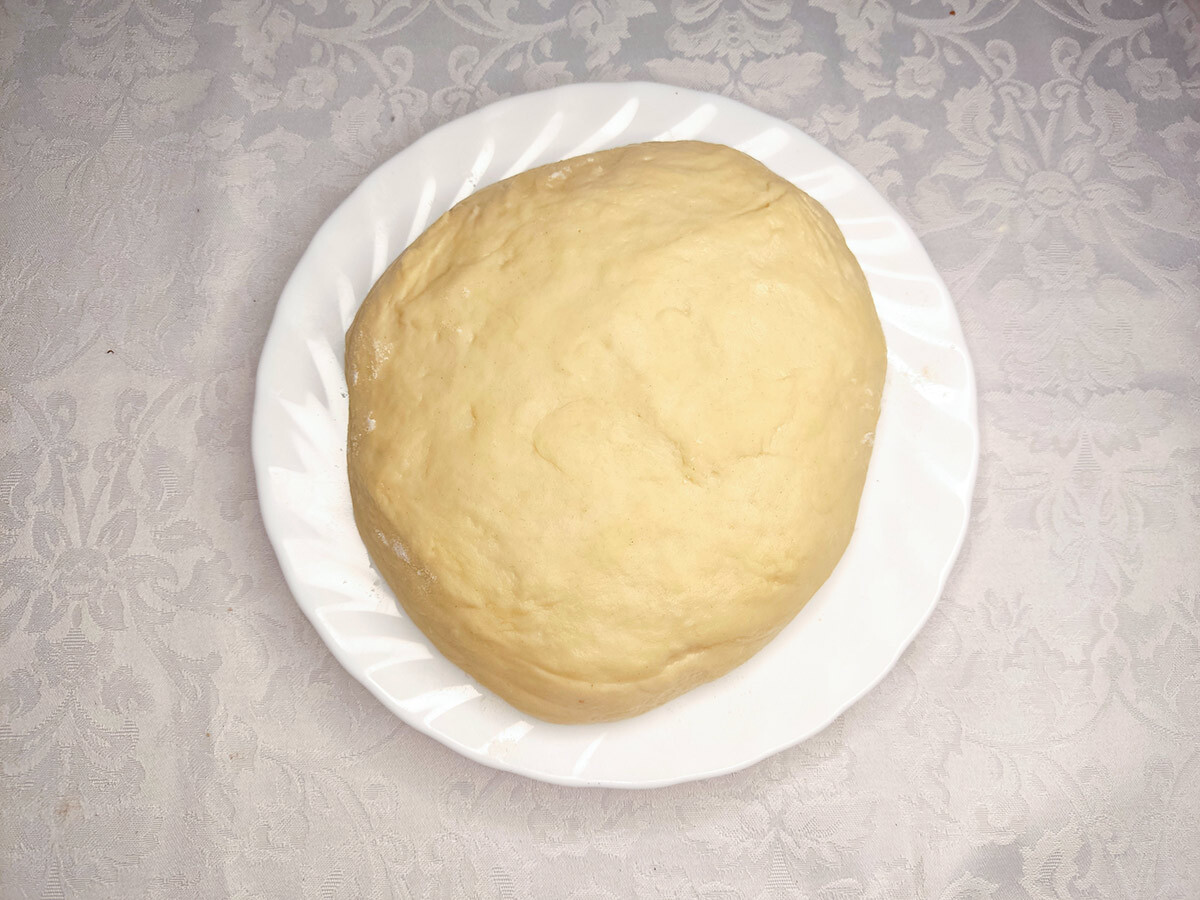
5. Roll out the dough into a thin layer, the thickness of which should be 1-1.5 mm.
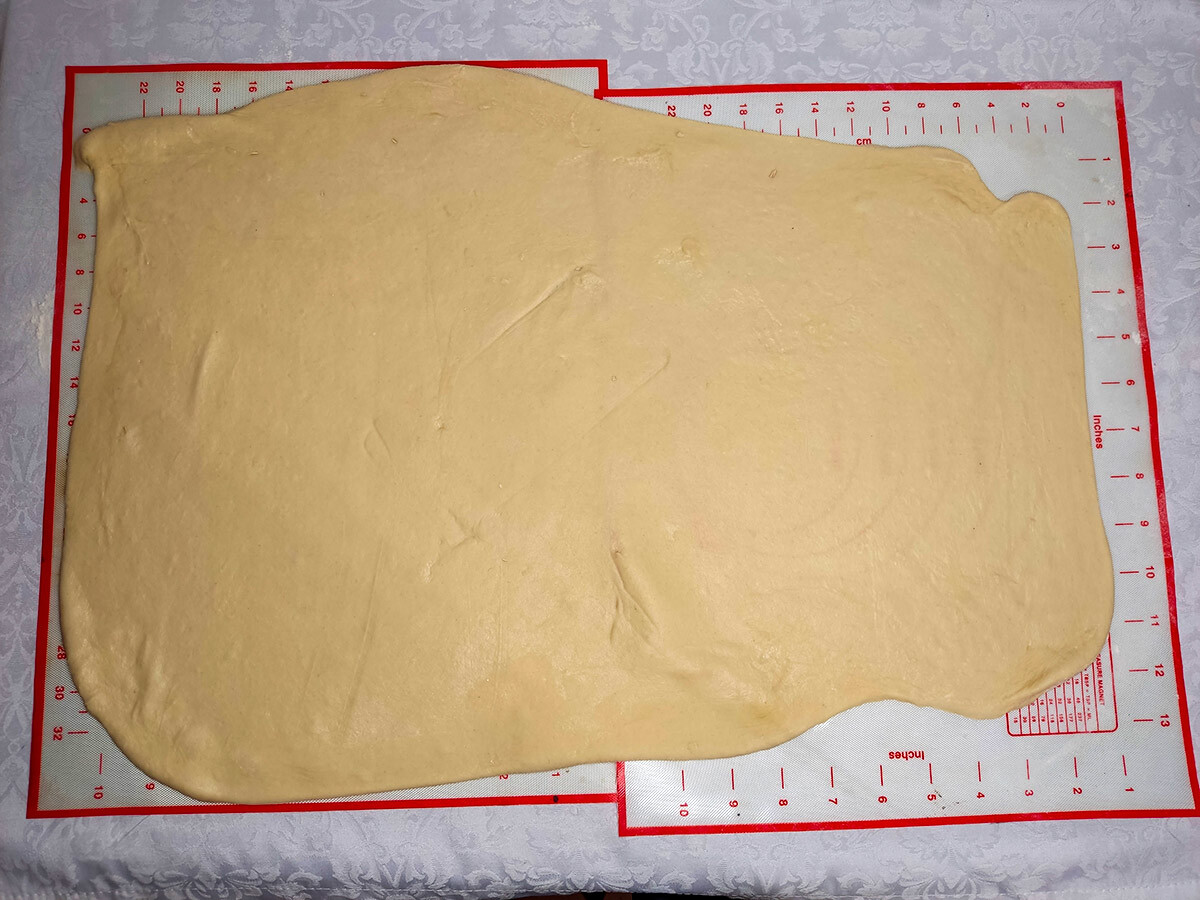
6. Cut the dough into rectangles about 5-7 cm in size, and leave the dough for 20 minutes to dry.
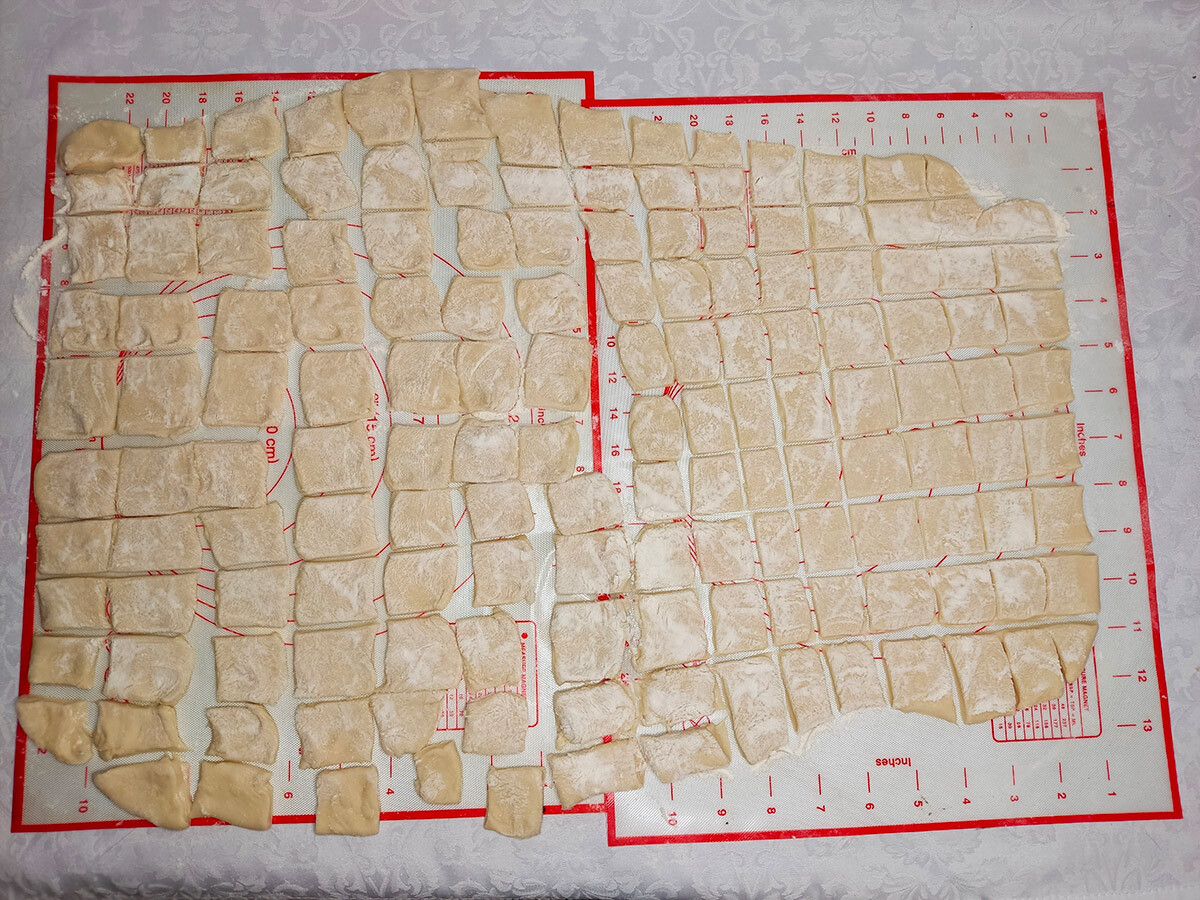
7. Take the finished broth, and remove the onions, carrots and meat. Don’t throw the carrots away; we will still need them, but the onions can be thrown away. Separate the meat from the bones and divide into small pieces.
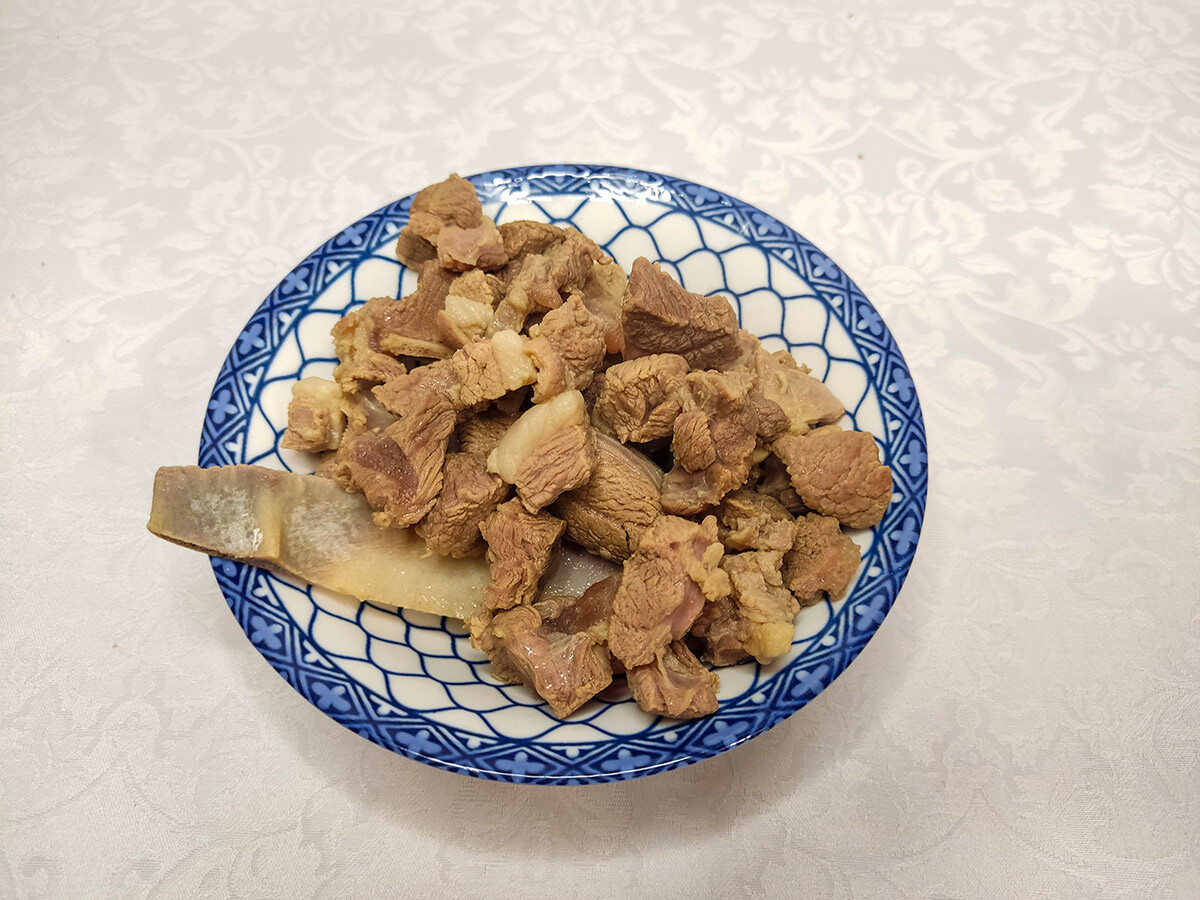
8. Cut the remaining onion into half rings, put it in a frying pan and pour the broth so that the onion is covered entirely. Bring it to a boil, add salt and pepper to taste; cook for 5 minutes on low heat, remove from the stove. The boiled carrots can be cut into strips; this option is considered more festive for holidays and special occasions.

9. Dilute the remaining broth after cooking the meat and bring it to a boil. In this broth we will cook the chopped dough. Add salt and ground pepper to taste. Prepare the rectangles of dough by putting them in the boiling broth in 2-3 sets for about 2 minutes.
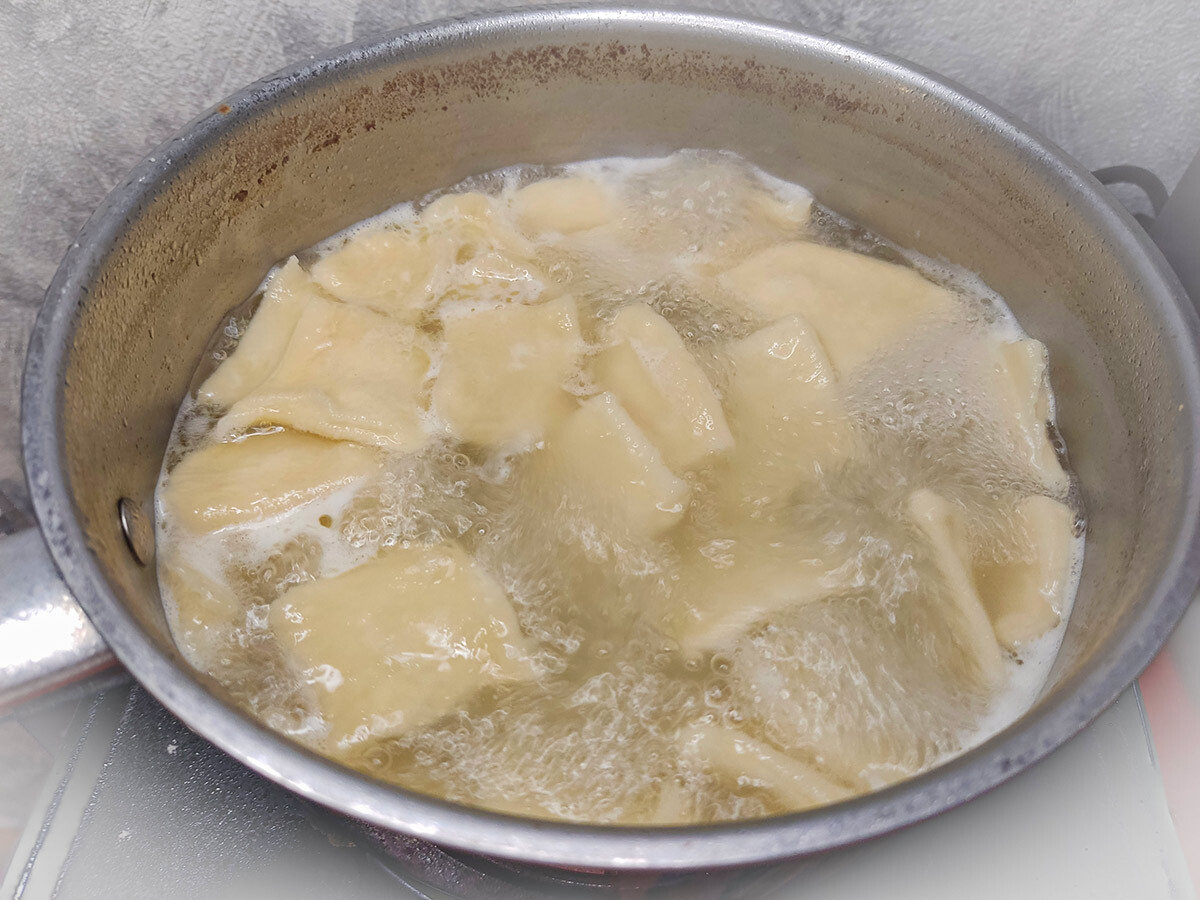
10. Remove the dough rectangles from the broth with a slotted spoon and put on a large plate.
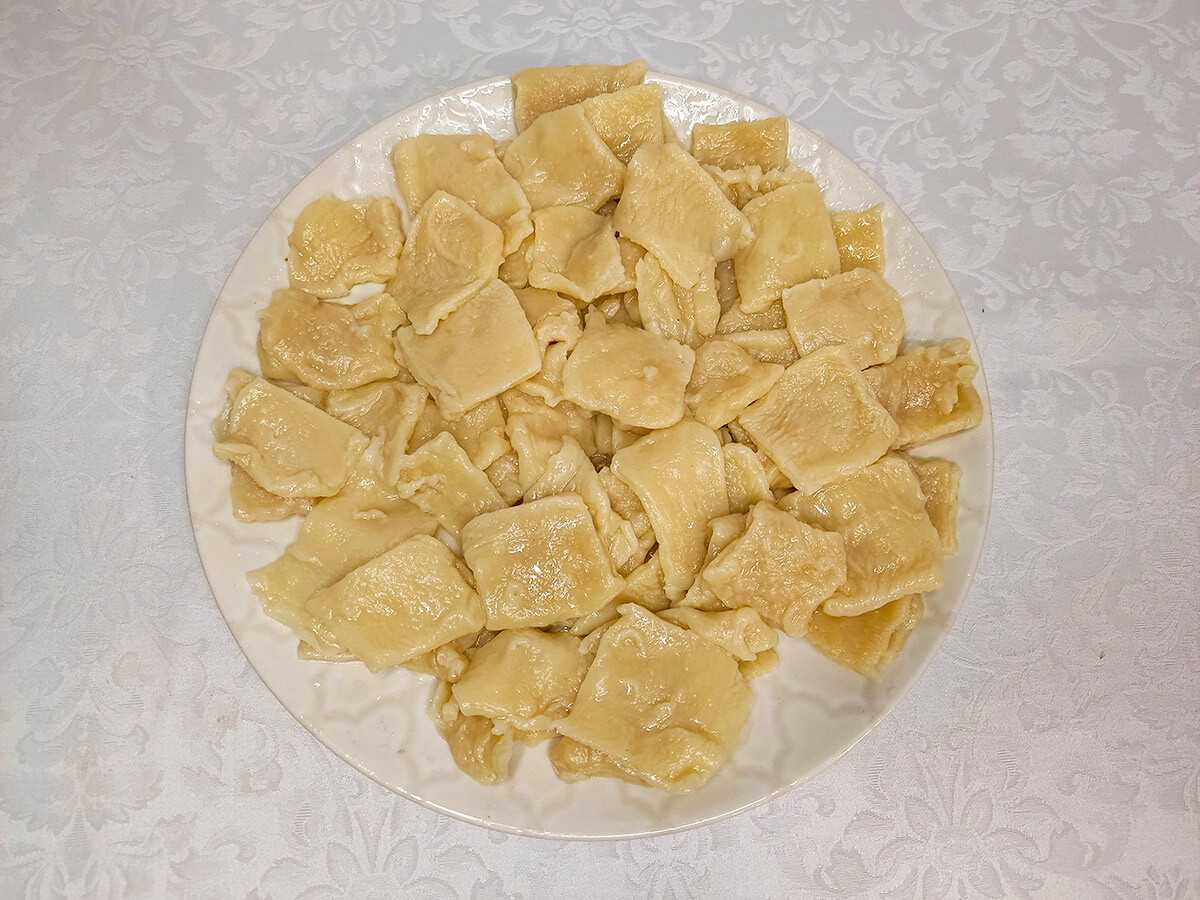
11. Put the pieces of meat on the dough, and put onions stewed in the broth on the meat. Sprinkle beshbarmak with herbs and separately serve the remaining onion and broth. Enjoy!
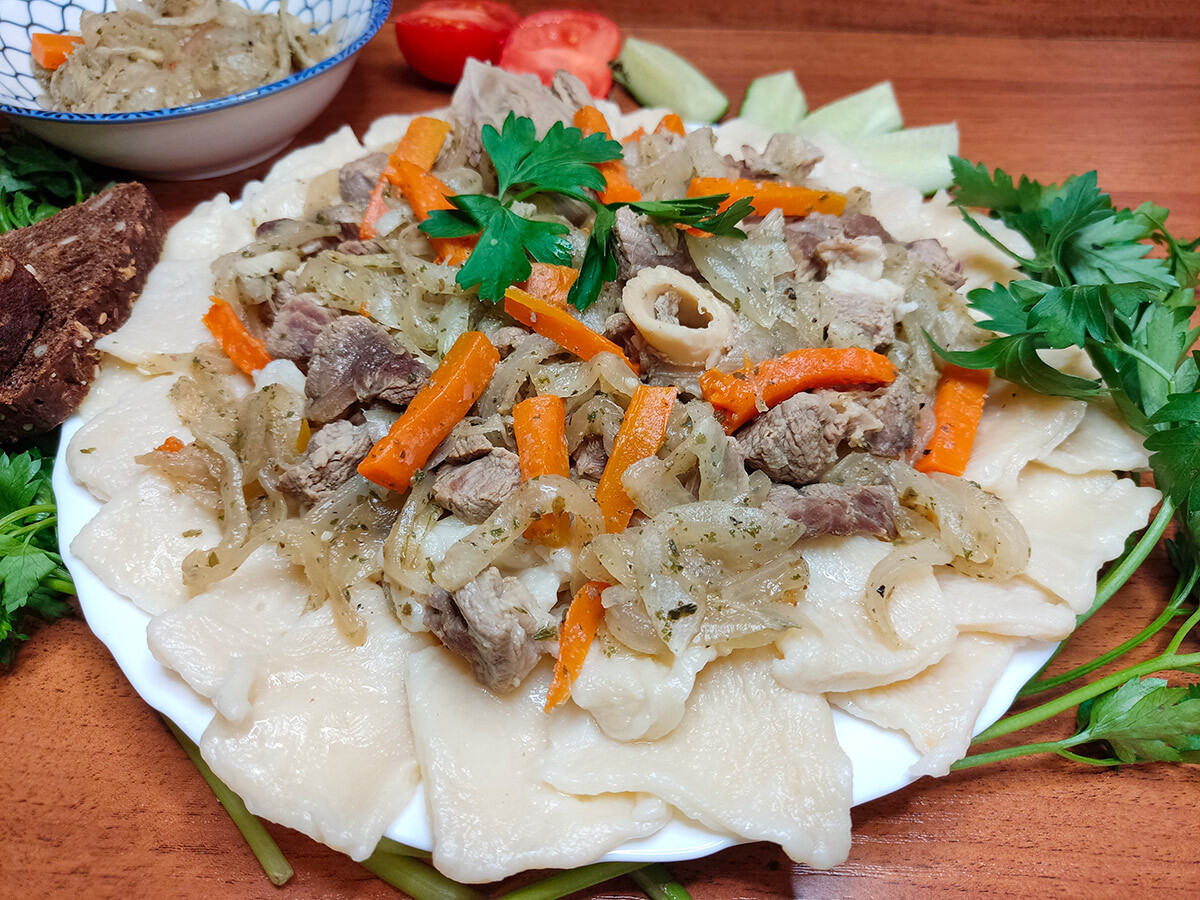
Dear readers,
Our website and social media accounts are under threat of being restricted or banned, due to the current circumstances. So, to keep up with our latest content, simply do the following:
If using any of Russia Beyond's content, partly or in full, always provide an active hyperlink to the original material.
Subscribe
to our newsletter!
Get the week's best stories straight to your inbox